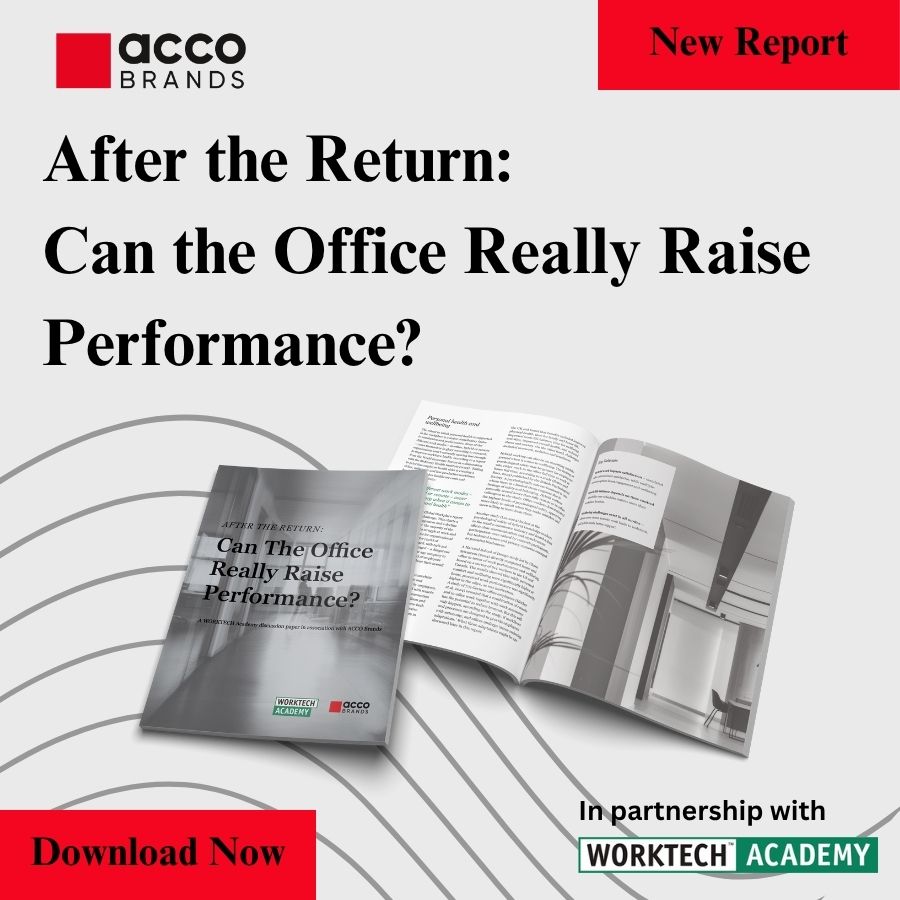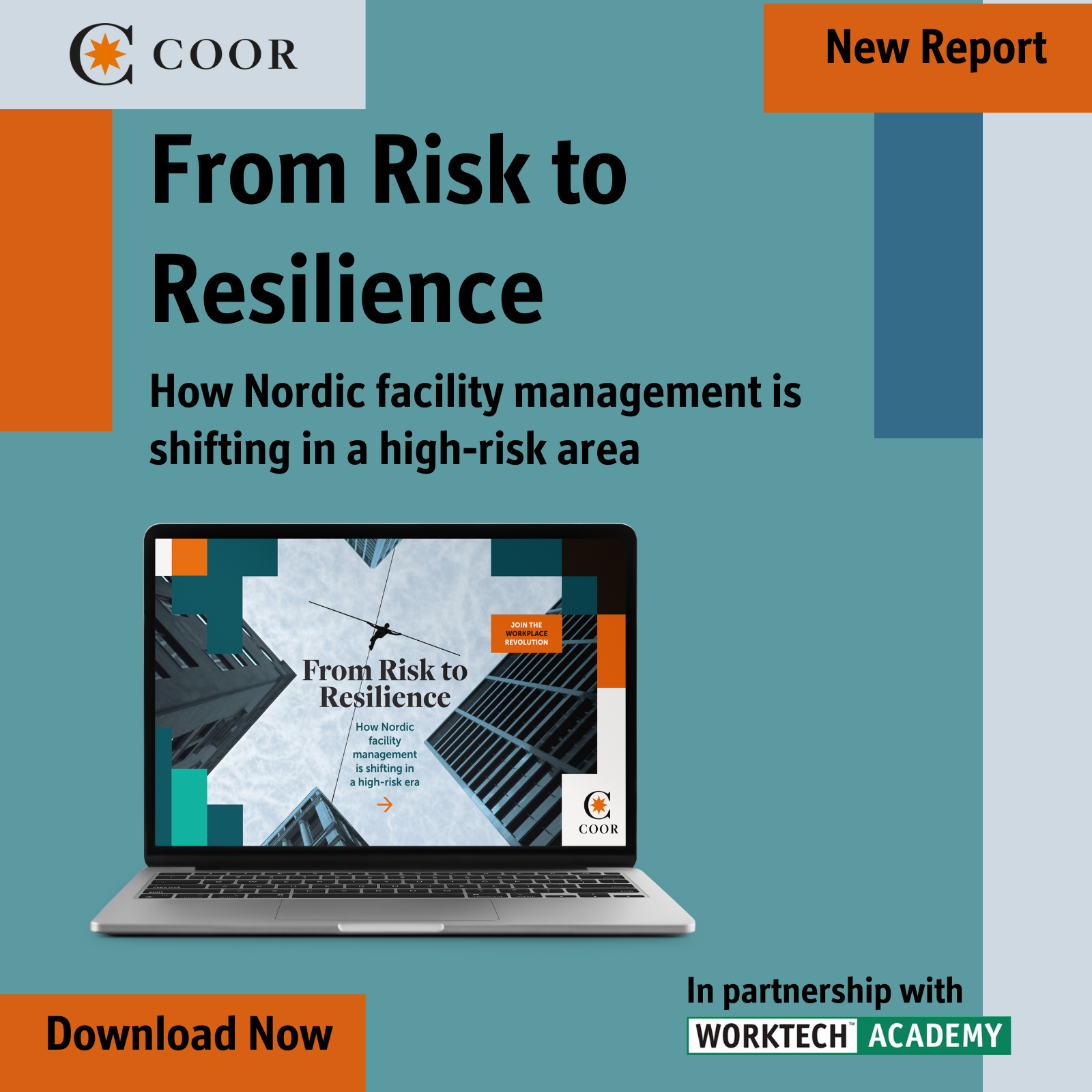Turbulent flow: why firms need to overcome the fear of missing out
Workplace strategy is currently obsessed with space optimisation for fear of missing out on efficiency gains. But cutting space can also affect team performance. Could a ‘turbulent office’ be the answer?
In his book Missing Out: In Praise of the Unlived Life, psychoanalyst Adam Phillips reflects on the lives we live versus the ones we imagine. It is often the life unlived – the person we could have been – that haunts us most.
Similarly, workplace strategies can be plagued by a fear of missing out: the possibility that we’re not fully optimising our office space – or not quite seizing every opportunity for cost savings or performance gains. According to JLL, 73% of organisations name portfolio optimisation as their main workplace objective.
This fear of missing out fuels a set of complex contradictions. How do we make our offices ‘work harder’ and reduce real estate costs while still delivering environments that ensure business performance and employee satisfaction?
Understanding the volume problem
The debate over time spent in the office versus working from home has grown louder and more nuanced in recent years. Hybrid working now defines much of how we operate, and its implications go well beyond space occupancy alone.
The truth is that organisations face a spatial paradox: a disconnect between the office space available and how it’s used. Determining the ideal equation — how many people will be in the office at any given time, and how much space is required to support them — remains one of the most significant challenges.
At face value, hybrid work presents opportunities for reducing the corporate footprint. Fewer employees on-site should mean fewer square metres needed. But the reality is more complicated. When space is reduced, it often becomes difficult for full teams to gather or collaborate effectively when they do come in.
The contradiction here is stark: in trying to create more efficient space, we can inadvertently compromise the very collaboration and connection that make in-person work valuable.
The hybrid myth
Many organisations are trying to ‘flatten the curve’ of office usage — to ensure consistent occupancy levels throughout the week. Strategies include mandating specific in-office days, creating team-based rotas, or arranging events on quieter days to lure people in.
Neither the ‘carrot’ nor the ‘stick’ approaches are making a huge difference. London transport data from 2022 to 2024 shows little shift in peak travel days, suggesting that the push-pull tactics have limited influence on the way that office space is consumed.
The reality is more layered. Employees might be working in the same office on the same day, but they still interact mostly online. People now routinely attend virtual meetings daily and while physically present in the office. Team members might be working from home or on remote locations. Consequently, the office itself must become ‘remote work proof’ – designed to support both physical presence and digital interaction.
Tighter footprints can impact the motivation to commute. Complications such as booking in advance, difficulty in engaging virtually, and uncertainty over who will be present or whether space will be available create friction. The outcome? People hesitate. They’re unsure whether coming into the office will be worth it. As a result, team routines become unpredictable. Presence becomes inconsistent. And space, designed to accommodate a steady flow of people, is forced to respond to something more erratic.
From laminar to turbulent flow
This mismatch can be likened to the physics of flow. Office design often assumes a laminar flow: smooth, predictable, and uniform use. Building services, from ventilation to fire evacuation plans, are calculated on this principle.
However, hybrid working has created a turbulent flow environment: chaotic, unpredictable, and characterised by sudden surges. Some days see full teams, visiting departments, or hosted events. Other days see the workplace practically deserted, affected by weather, strikes, holidays, or no clear reason at all. The peaks and troughs are real and largely unavoidable.
In this context, the office must accommodate a high degree of variability, and its design must shift accordingly. This ‘turbulent’ space usage is here to stay.
Designing for a turbulent office
What does this mean in practice? We need spaces that can flex. Smaller, more segmented areas are better suited to support continuous virtual interaction. Acoustically sensitive solutions are essential to accommodate hybrid teams working together, but also apart. And we must offer proximity between desks and virtual meeting booths, enabling easy transitions.
Importantly, we must move beyond the desk as the unit of value. Instead, we need to understand how teams work — not just individuals. Collaboration looks different for different groups. Sometimes, it’s a big table for shared tasks; sometimes, it’s an enclosed room for extended debates. Togetherness — whatever form it takes — is vital.
Embracing difference
Companies, teams, people and their tasks are different. Some organisations are replacing soft seating and collaborative areas with more desks, motivated by the idea that people need desks to work and that soft seats such as sofas are not suitable workstations. For them, desks are equal to productivity.
However, this action needs a holistic approach, as increasing desk density may backfire. As the environment grows busier and noisier, fewer people may feel comfortable coming in. This tension between perceived need and actual use is complex — and it requires true compromise between the needs of the team and the real estate ambitions.
The office layout needs to be re-evaluated. In one project, I developed a workplace strategy for an advertising and media company. The proposal: a leaner, agile space that would cut the footprint. Technically, it worked. But when presented to the CFO, they asked a telling question: “What will this effectively save us in terms of expenditure – and how will this change impact our teams’ performance?’ The risk of saving on real estate while losing on team comfort and productivity was real. Sometimes, the cost-benefit balance didn’t add up. This was the case.
Designing for reality, not fear
FOMO — the fear of missing out — can skew how we approach workplace design. Optimisation must extend beyond desk ratios and occupancy data. It must consider how people really work, how teams operate, and what kind of space culture fosters performance.
Some companies are experimenting with fluidity. By closing certain floors on quiet days — Fridays, holidays, or during low-demand periods — and consolidating teams into specific areas, they’re increasing efficiency in both energy use and facilities management. This not only helps with sustainability goals but also boosts collaboration across departments by increasing ‘creative collisions’.
These approaches reflect a deeper shift: recognising that the office is no longer a static container of work but a dynamic environment that shapes — and is shaped by — how we work.
A collective effort
Rather than chasing the idea of ‘not missing out’, we must focus on creating offices that support how people live and work today. That means designing for teamworking complexity, not just for headcount. It means embracing the unpredictable by building systems flexible enough to respond.
Workplace strategy isn’t about building for perfection. It’s about making space for reality. We need to creatively tailor-make solutions that encompass not only how much space is needed but how it should be organised. Let’s keep imagining better, embracing the uncertainty and delivering for the teams.
 Muriel Altunaga is the founder of The Flow, a consultancy focused on aligning people, place and purpose in today’s evolving world of work. A designer and workplace strategist with years of experience shaping how people interact with space, she has delivered impactful projects that bridge human-centred design with business strategy, sustainability, real estate performance and change. Muriel has held senior roles in design practices, client organisations and global real estate firms such as CBRE.
Muriel Altunaga is the founder of The Flow, a consultancy focused on aligning people, place and purpose in today’s evolving world of work. A designer and workplace strategist with years of experience shaping how people interact with space, she has delivered impactful projects that bridge human-centred design with business strategy, sustainability, real estate performance and change. Muriel has held senior roles in design practices, client organisations and global real estate firms such as CBRE.







